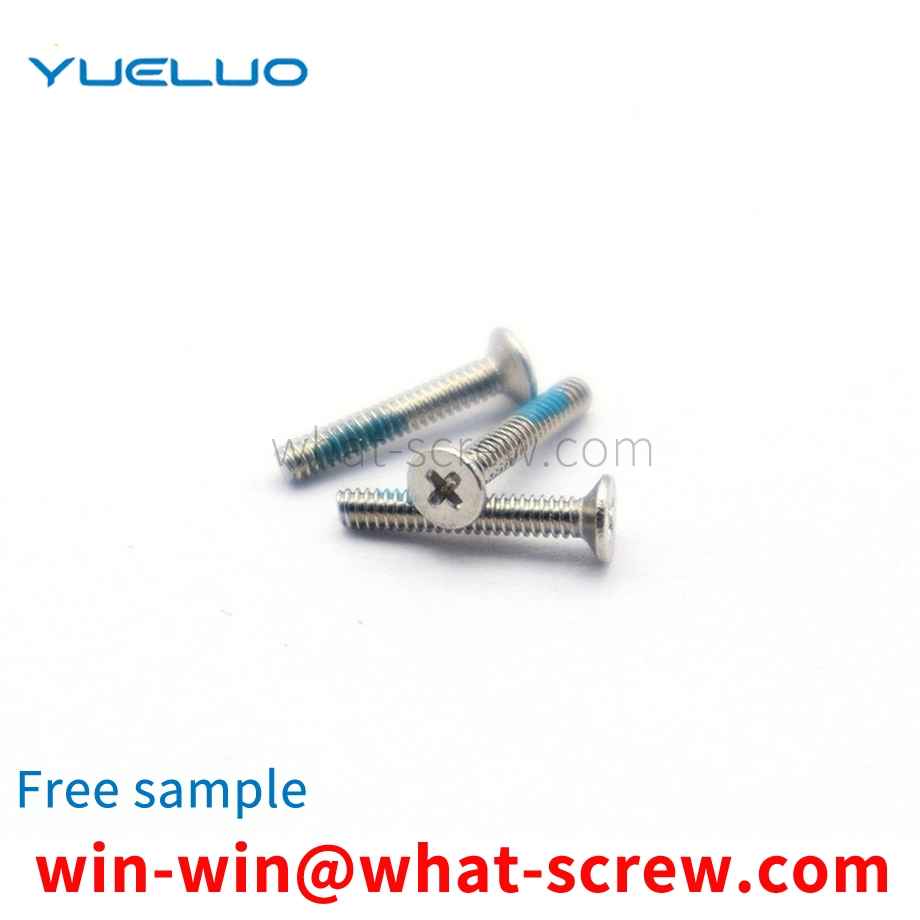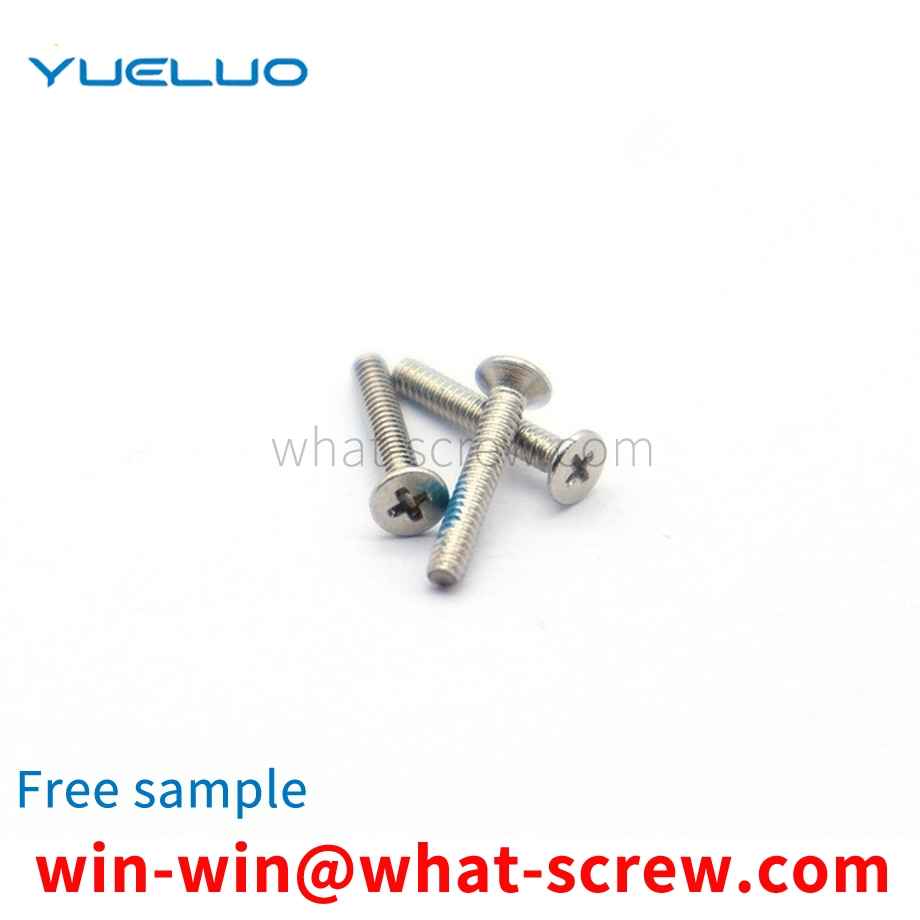Stainless steel screws are classified into austenitic stainless steel, ferritic stainless steel, martensitic stainless steel, and precipitation hardening stainless steel. The selection of stainless steel screws is also based on principles. Where to start, let you choose the stainless steel screws you need. After comprehensive and comprehensive consideration of these five aspects, the grades, varieties, specifications and material standards of stainless steel screws are finally determined. Austenitic stainless steel: the most basic alloying elements of austenitic stainless steel are chromium and nickel. The grade is a chromium-nickel austenitic stainless steel with a chromium content of about 18% and a nickel content of about 8%, often called 18-8 stainless steel. The element ratio of chromium and nickel basically ensures that the structure of the steel is stable austenitic ferritic stainless steel: 430 type ordinary chromium steel, its corrosion resistance and heat resistance are better than 410 type, magnetic, but it It cannot be strengthened by heat treatment, and is suitable for stainless steel screws with slightly higher corrosion resistance and heat resistance and general strength requirements. Martensitic stainless steel: Type 410 and 416 can be strengthened by heat treatment, with a hardness of 35 to 45HRC, and good machinability. They are used for general-purpose heat-resistant and corrosion-resistant stainless steel screws. Type 416 has a slightly higher sulfur content and is a free-cutting stainless steel. Type 420, sulfur content? R0.15%, improved mechanical properties, can be strengthened by heat treatment, maximum hardness value of 53 ~ 58HRC, used for stainless steel screws requiring higher strength. Precipitation hardening stainless steel: 17-4PH, PH15-7Mo, they can get higher strength than the usual 18-8 type stainless steel, so they are used for high-strength, corrosion-resistant stainless steel stainless steel screws. A-286, a non-standard stainless steel, has higher corrosion resistance than commonly used Type 18-8 stainless steels, as well as good mechanical properties at elevated temperatures. Used as high-strength, heat-resistant, corrosion-resistant stainless steel screws, can be used to 650 ~ 700 ℃. Austenitic stainless steel: The commonly used models are 302, 303, 304, and 305, which are the so-called 18-8 austenitic stainless steels. Both corrosion resistance and mechanical properties are similar. The starting point of selection is the production process method of stainless steel screws, and the method depends on the size and shape of stainless steel screws, and also depends on the quantity of production. Type 302 is used for machined screws and self-tapping bolts. Type 303 In order to improve machinability, Type 303 stainless steel is added with a small amount of sulfur and is used to machine nuts from bar stock. Type 304 is suitable for hot heading stainless steel screws, such as longer gauge bolts, large diameter bolts, which may be beyond the scope of the cold heading process. Type 305 is suitable for cold heading processing of stainless steel screws, such as cold formed nuts, hex bolts. Type 309 and Type 310, their Cr content and Ni content are higher than 18-8 type stainless steel, suitable for stainless steel screws working at high temperature. Types 316 and 317, both of which contain the alloying element Mo, have higher high temperature strength and corrosion resistance than 18-8 type stainless steel. Type 321 and Type 347, Type 321 contains a relatively stable alloying element Ti, Type 347 contains Nb, which improves the intergranular corrosion resistance of the material. It is suitable for stainless steel standard parts that are not annealed after welding or serve at 420~1013℃.
screw suitable for a variety of tools is a single-structure threaded part, including a screw body and a screw head. The outer surface of the screw body is processed with an external thread 1, and the outer side of the screw head is formed by six screw heads. Prismatic, the top surface of each edge of the outer hexagonal prism is a boss, between each boss is an end face groove 4, and the middle of each boss is provided with an end face hole 3; the inner side of the screw head is formed by six screw heads. The side surface 5 forms an inner hexagonal prism hole, and the bottom of the inner hexagonal prism hole is processed with a cross groove 12 .
Screws are a common type of fastener on the market. It is a type of fastener consisting of a head and a screw. It can be divided into three categories according to its purpose: machine screws, set screws and special purpose screws. Machine screws are mainly used for a fastened connection between a part with a fixed threaded hole and a part with a through hole, without the need for nut matching (this connection form is called screw connection, which is also a detachable connection; it can also be Matching with nuts, it is used for fast connection between two parts with through holes.) Set screws are mainly used to fix the relative position between two parts. Special purpose screws, such as eyebolts, are used for hoisting parts.
In the household and industry, when installing furniture, home appliances, electrical appliances, equipment and other objects, the objects are uneven or uneven due to the uneven bottom of the object, or because the placement surface or installation surface is uneven, or because the two surfaces are different and do not fit together. stable, produce vibration, shaking or sliding, affecting the use effect and service life. Sometimes two items need to be placed next to each other, but their surfaces cannot be in direct contact, otherwise the surfaces will be damaged. For these two cases, the common solution is to install gaskets. There are two types of gaskets: wedge and flat. The wedge-shaped gasket adjusts the actual thickness by adjusting the length of the insertion gap, but the contact surface and load-bearing surface of this method are small, and due to its wedge-shaped structure, the gasket may withdraw after being stressed for a long time. Flat gaskets are generally made from local materials, using waste paper, plastic, rubber, metal and other materials to form the required thickness by folding or stacking. Such gaskets are often not quickly assembled to the exact desired thickness, are not aesthetically pleasing, and are not reusable. The purpose of Guangdong Yueluo Hardware Industry Co., Ltd. is to provide a product that can keep furniture, home appliances, equipment, electrical appliances and other objects horizontal, vertical or stable, prevent them from vibrating, shaking or sliding, and can provide appropriate thickness and beautiful appearance. gasket. The purpose of Yueluo is to realize a gasket that can be combined at will. The sheet 1 is provided with small holes 3 , and the connecting device 2 connects a plurality of sheets 1 together through the small holes 3 . The connecting device 2 is a rivet or a screw. The material of the sheet 1 can be plastic, metal, paper card or rubber. The gaskets provided by Yueluo can be combined at will. Multiple sheets are connected together by rivets or screws. By opening or closing the sheets, or dismantling the screws, the sheets are reassembled to obtain a combination of gaskets with different thicknesses and elasticity. The space between the installation object and the installation surface to keep the object horizontal, vertical or stable and prevent it from vibrating, shaking or sliding.
1. Ordinary outer hexagon - widely used, characterized by relatively large tightening force, the disadvantage is that there must be enough operating space during installation, and adjustable wrench, open-end wrench or glasses wrench can be used during installation, all of the above wrenches require a large amount of space. operating space. 2. Cylindrical head hexagon socket - is the most widely used of all screws, because it has a relatively large tightening force, and can be operated with a hexagon wrench. It is very convenient to install and is used in almost all kinds of structures. The appearance is more beautiful and neat. The disadvantage is that the tightening force is slightly lower than the outer hexagon, and the inner hexagon is easily damaged due to repeated use and cannot be disassembled. 3. Pan head inner hexagon - rarely used mechanically, the mechanical properties are the same as above, mostly used in furniture, the main function is to increase the contact surface with wooden materials and increase the ornamental appearance. 4. Headless inner hexagon - must be used in certain structures, such as the top wire structure that requires a large top-tight force, or where the cylindrical head needs to be hidden. 5. Countersunk head hexagon - mostly used in power machinery, the main function is the same as the inner hexagon. 6. Nylon lock nut - a nylon rubber ring is embedded in the hexagonal surface to prevent the thread from loosening, and it is used on strong power machinery. 7. Flange nuts - mainly play the role of increasing the contact surface with the workpiece, mostly used in pipes, fasteners, some stamping parts and casting parts. 8. Ordinary hex nut - the most widely used and one of the most common fasteners.
We have many years of experience in the production and sales of screws, nuts, flat washers, etc. The main products are: countersunk head miniature flat head machine screws, square nuts and nuts, welded round nut joints, high precision hexagonal fine pitch nuts and other products, we can provide you with Provide the right fastener solution for you.



















 Service Hotline
Service Hotline




